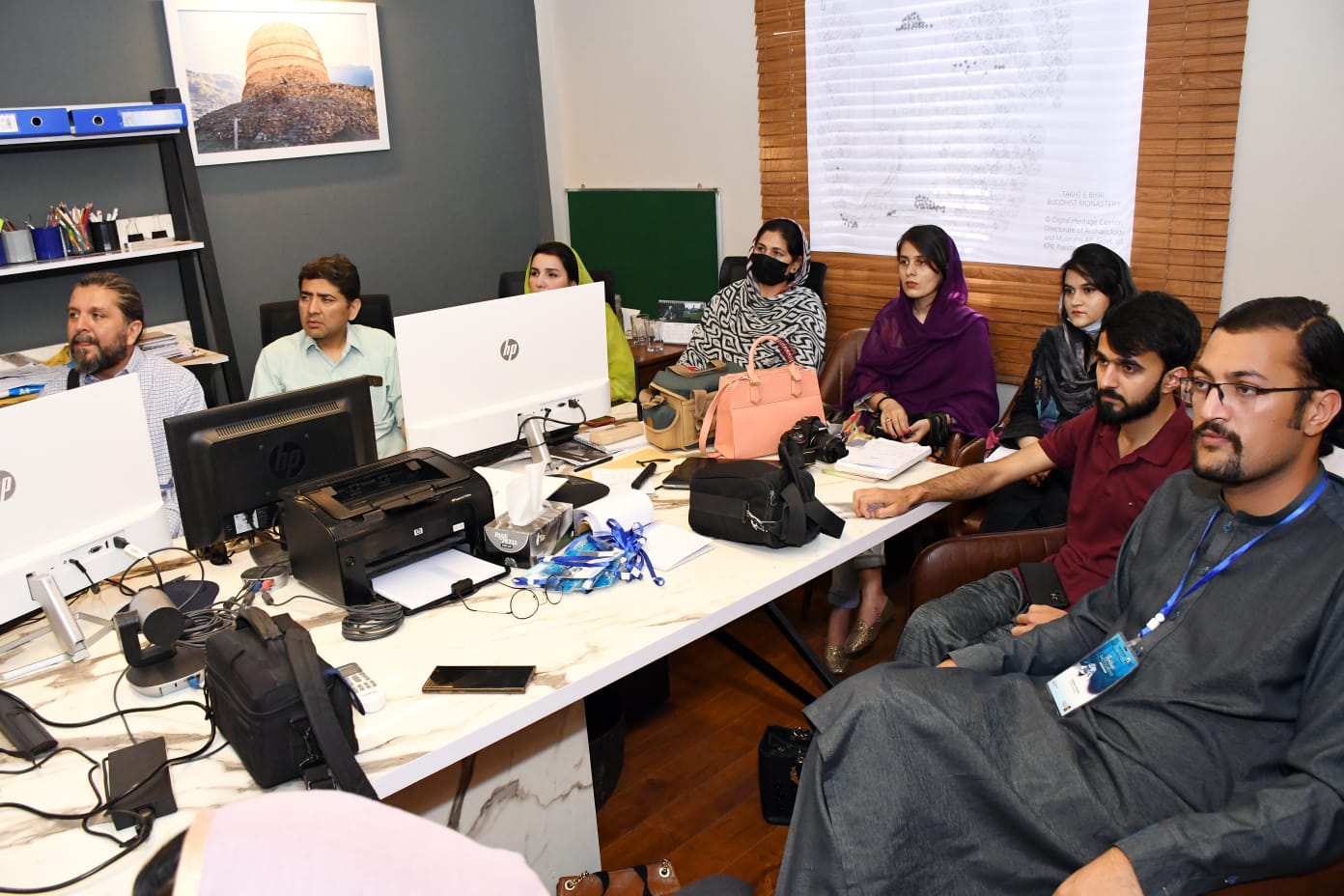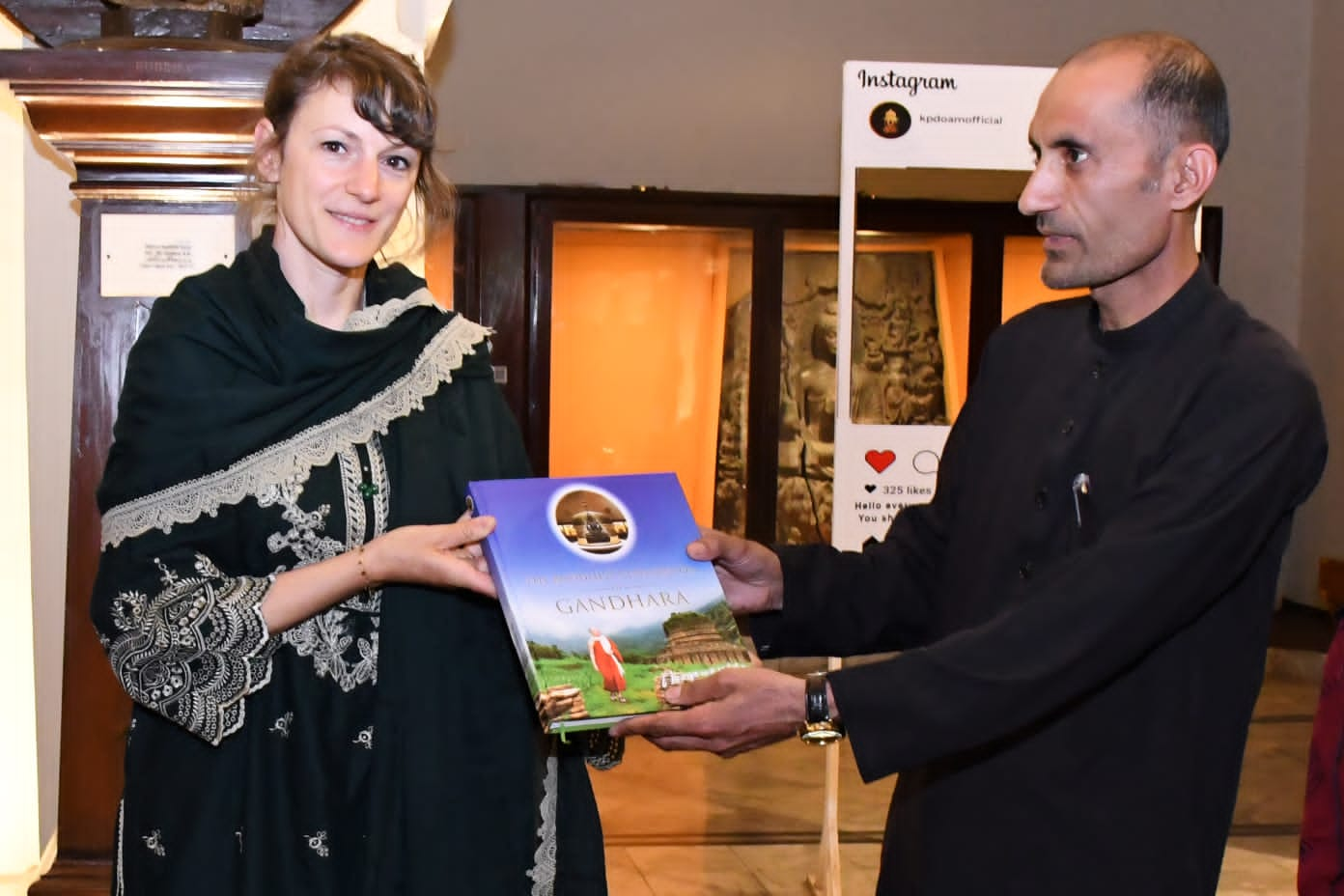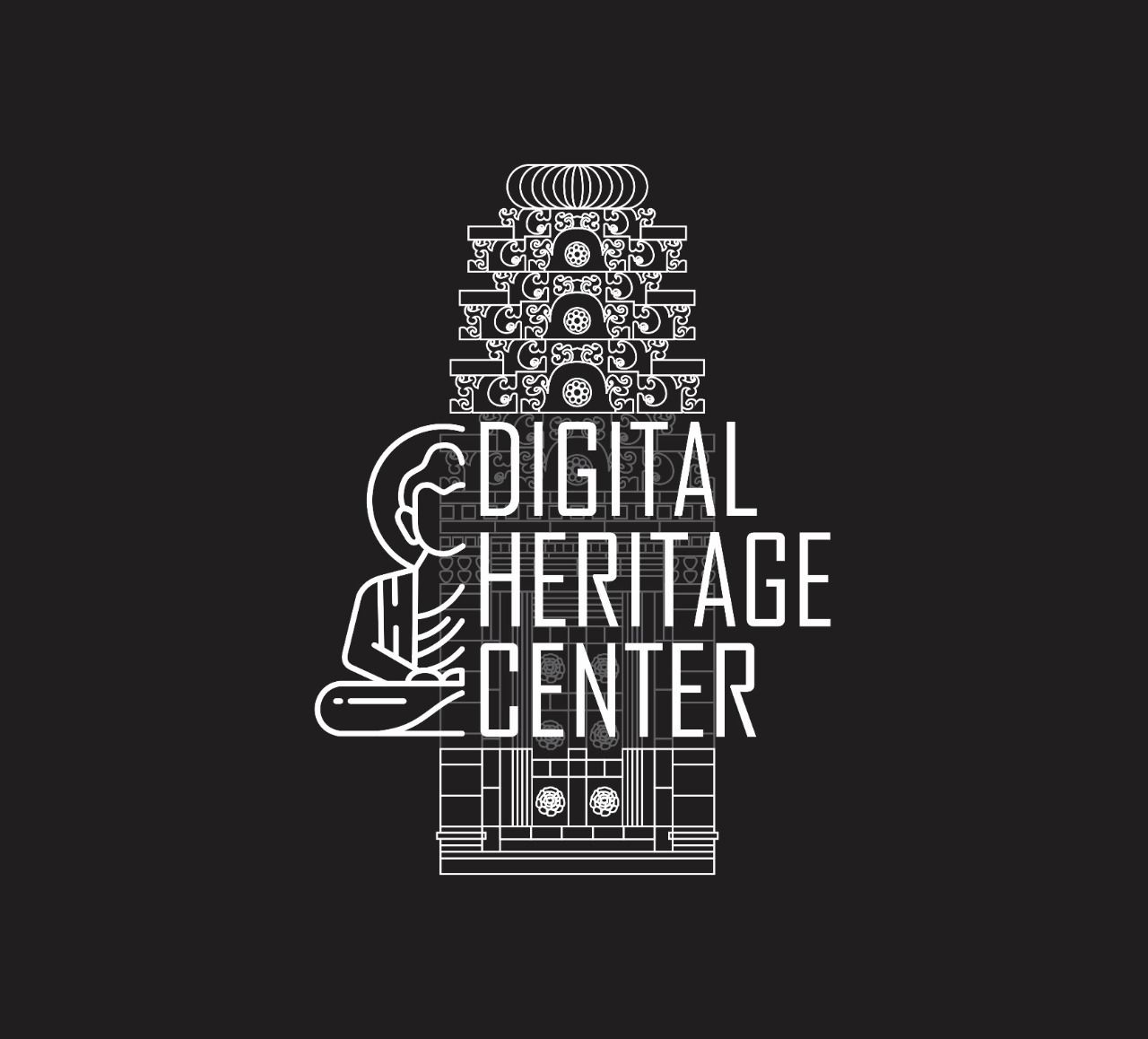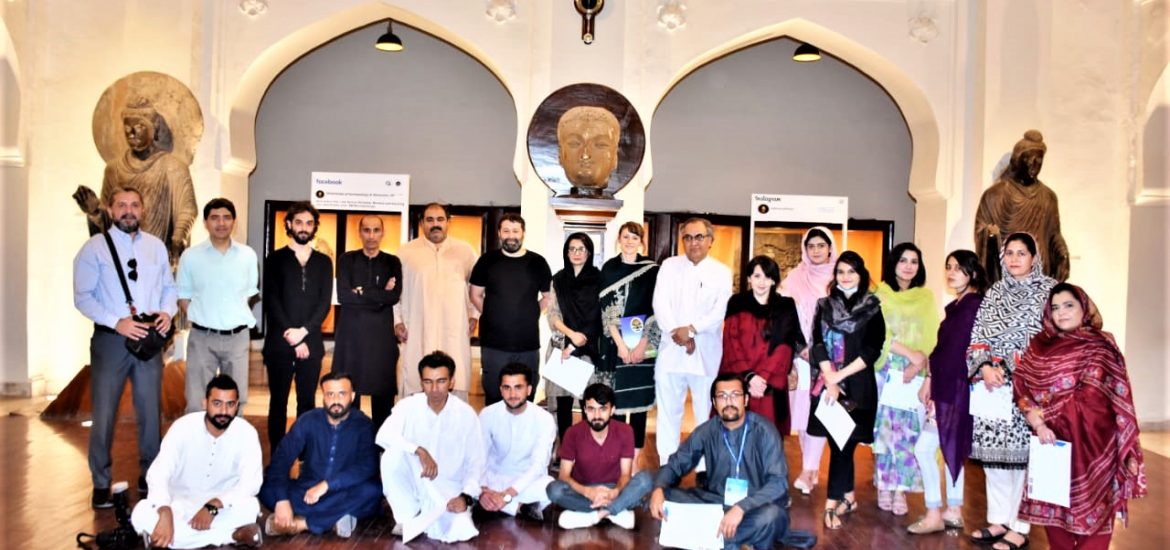From 26–29 April, the Directorate of Archaeology & Museums KP’s (KPDOAM) Digital Heritage Centre held a three-day workshop, titled “Heritage Photography Workshop,” in partnership with Digitalisation of Gandharan Artefacts (DiGA). Participants included the project leader of DiGA, Prof. Dr. Jessie Pons. This workshop was the fruit of a collaborative partnership between a German-based research project and a Peshawar-based, government-supported institute, which was founded by Dr. Abdul Samad (director of KPDOAM).
Dr. Pons is junior professor in South Asian History of Religion at Ruhr Universität Bochum, where DiGA is based. Other attendees included Dr. Ali Arshad Khan, project director of the Digital Heritage Centre, and Prof. A. S. Durrani, director of PCA Abdul Wali Khan University Mardan (AWKUM).
At the conclusion of the workshop, she presented attendees with a certificate on behalf of DiGA. DiGA had spearheaded the effort of reaching out to experts and inviting them to give their expertise to Peshawar-based students.

This three-day workshop guided participants in the differences between scientific and artistic views in photography, depth of field, scale and colour reproduction, lighting, and more. Participants were also introduced to diverse technologies and methodological concepts in the field of heritage photography, and were taught the latest methods in two core disciplines: object photography and built heritage and landscape photography.
Practical modules included 3-D modelling techniques in photogrammetry using DSLR cameras and post processing with the latest available software. These factor into account smaller budgets that might not be accessible to non-German or non-European institutes, but do not compromise on the quality of the images and offer astounding results at lesser costs.

The international experts that DiGA brought in offered training in methods of integrating people, perspective, and positioning, analysing built heritage within urban landscapes, and interiors, capturing architectural details and human interactions, and documenting intangible heritage.
The collaboration between DiGA and the Digital Heritage Centre is a natural partnership. The Digital Heritage Centre aims to digitize all sites of cultural and historical interest in Pakistan. DiGA’s focus is intimately involved with the Buddhist sculptures that are now preserved in museums in Pakistan. Its mission is to digitize these sculptures, which were produced in the region of Gandhara (present-day Pakistan/Afghanistan) during the first five centuries of the Common Era. The completion of DiGA will result in a platform for the repository and analysis of Gandharan Buddhist artefacts in Pakistan collections. Its technical functions will boost the analysis of formal and iconographic features of Buddhist images.
Dr. Khan and Dr. Pons are emphatic that collaboration between collegial institutions like the Digital Heritage Centre and foreign organizations like DiGA is critical to nurture a new generation of specialists.

This article was written in collaboration with the Digital Heritage Center of the Directorate of Archaeology and Museums, Khyber Pakhtunkhwa (KPDOAM)


